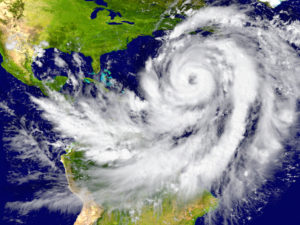Complete Guide to Hurricane Insurance

While homeowners insurance offers a wide variety of protections, it will not cover every type of damage and this is especially true for hurricanes.
Your home is not only the place where you live, raise a family and make memories, in most cases it’s also your biggest and most valuable investment. Properly protecting this investment is a necessity and homeowners insurance can help make sure your home is rebuilt in the event of a disaster.
While homeowners insurance offers a wide variety of protections, it will not cover every type of damage and this is especially true for hurricanes. If your home is located in an area prone to hurricanes fully understanding your coverage is key to making sure you are not on the hook for damages in the event a hurricane destroys your home.
In many cases it will be necessary to buy a separate flood policy and possibly a windstorm policy to ensure all hurricane damage is covered.
Here is a complete guide to hurricane coverage:
What Your Homeowners Will and Will Not Cover
In most cases, hurricanes produce damage through strong winds and flooding. Depending on what type of damage happens at your home, you may or may not be covered.
Windstorm Damage
A standard homeowner policy will cover wind damage, including wind damage caused by hurricanes, but there can be exceptions depending on which state you call home. Certain coastal states that have an especially high risk of hurricane damage may require a separate windstorm insurance policy.
These policies may be available through a traditional insurance company or a state-run insurance pool if traditional insurance companies are unwilling to write windstorm policies in your particular state. A windstorm policy will cover all types of windstorm damage, not just hurricane damage.
One thing to be aware of when it comes to windstorm policies is the deductible. While traditional homeowner policies allow you to choose a flat rate deductible that can range from $250 all the way up to $10,000 or higher. A windstorm policy on the other hand will typically have a percentage deductible which can be much more expensive.
As an example, if your home is insured for $500,000 with a 5% percent wind deducible, your share of the bill will amount to $25,000 if your home is destroyed by a hurricane.
Not all states allow percentage deductibles but quite a few do. According to the Insurance Information Institute (III) the following states allow percentage deductibles for hurricane damage:
|
|
When shopping for a homeowners policy be sure to verify the type of deductible that is applied to windstorm damage as your share of the claim amount will vary dramatically between a standard policy and a percentage policy.
Flood Damage
A standard homeowners policy does not offer any coverage for flood damage, regardless of whether it was caused by a hurricane or not. This includes flooding due to water from a storm surge, which is particularly common during a hurricane.
In order to be protected from flood damage you will need to purchase a separate flood policy. If your home is located in a flood or hurricane prone area, your lender will most likely require that you carry flood insurance.
Flood insurance is sold through normal insurance companies but prices are set by the federal government via the National Flood Insurance Program (NFIP) so there is no need to shop your policy based on price.
Flood insurance can be expensive, especially if you live oceanfront or in a coastal community. Despite the cost, this type of coverage is a necessity and can be a financial lifesaver if your home is flooded due to a hurricane or other storm.
In order to be fully protected against hurricane damage, a flood policy must be in place.
How to Save Money on Hurricane Insurance
Here are a few tips on how to save money on hurricane protection:
- Shop your coverage: This is absolutely the best way to save money when it comes to protecting your home. While flood insurance prices are set by the NFIP, prices for windstorm protection can vary wildly. Shop your coverage on a regular basis, experts recommend at least once every two years.
Look for policies that offer a typical deductible, but if percentage deductibles are the only options, look for the lowest percentage available.
- Ask for Discounts: Insurers may offer discounts if you upgrade your home to withstand a hurricane or strong windstorms. Storm shutters and upgraded roofing materials are just a couple of examples of possible discounts. Talk to your insurer about your discount options.
- Don’t Wait: Flood insurance policies usually have a 30-day waiting period before coverage takes effect so do not wait until a hurricane is bearing down on your home to purchase coverage. If your home is damaged in the 30-day waiting period the repair bills will fall to you.
